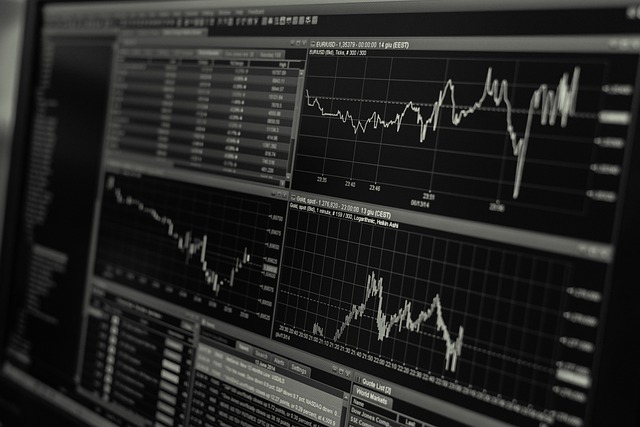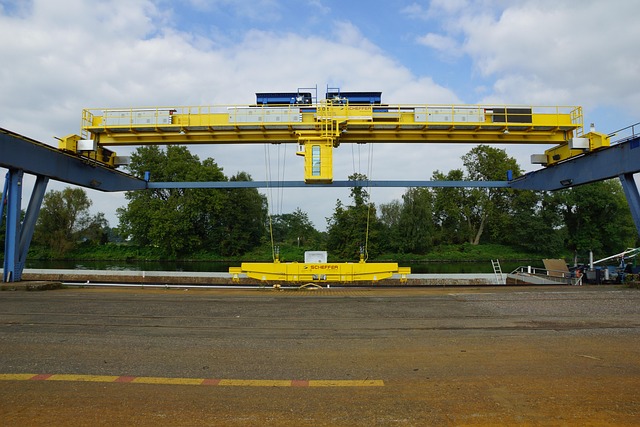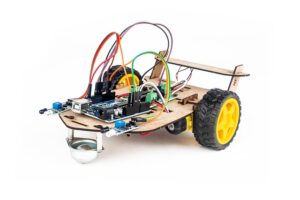Robot trading (algorithmic trading) is transforming Australia's financial sector by leveraging advanced algorithms and machine learning for swift, accurate trade execution. This technology automates decision-making, offering investors unprecedented efficiency, cost savings, and accessibility through data analysis for informed investments and enhanced risk management. With its potential for higher returns in dynamic markets, robot trading is poised to significantly shape Australia's investment landscape as technology advances. However, ethical considerations like transparency, accountability, and bias must be addressed to safeguard investor rights and maintain fair market dynamics.
“Robot trading, an innovative force in global financial markets, is revolutionizing traditional investing models in Australia. This cutting-edge approach leverages AI and machine learning algorithms to execute trades with speed and precision, unlocking new possibilities for investors. From enhancing market efficiency to democratizing access to advanced strategies, the rise of robot trading brings both opportunities and challenges.
This article explores the transformative potential of this technology, delving into its fundamentals, benefits, ethical implications, and real-world applications across diverse Australian industries.”
- The Rise of Robot Trading: Unlocking New Possibilities in Australia's Financial Market
- Understanding the Basics: What is Robot Trading and How Does it Work?
- Benefits of Implementing AI-Driven Trading Strategies in Australia
- Challenges and Ethical Considerations in Adopting Robot Trading Systems
- Case Studies: Successful Robot Trading Applications in Australian Industries
The Rise of Robot Trading: Unlocking New Possibilities in Australia's Financial Market

The financial landscape in Australia is undergoing a quiet revolution, driven by the emergence of robot trading. This innovative approach to investing leverages advanced algorithms and machine learning capabilities to execute trades with speed and precision, transforming traditional investment strategies. By automating the decision-making process, robot trading offers investors a level of efficiency, cost-effectiveness, and accessibility previously unattainable.
In Australia’s dynamic financial market, robot trading is unlocking new possibilities for both retail and institutional investors. It enables the analysis of vast datasets, identifying subtle patterns and trends that human analysts might miss. This capability translates to more informed investment choices, improved risk management, and potentially higher returns. As technology continues to evolve, robot trading is set to play an increasingly significant role in shaping Australia’s investment future.
Understanding the Basics: What is Robot Trading and How Does it Work?

Robot trading, also known as algorithmic trading or automated trading, is a revolutionary approach in financial markets that utilizes computer programs to execute trades with minimal human intervention. This advanced strategy leverages sophisticated algorithms and machine learning techniques to analyze vast amounts of market data, identify patterns, and make informed investment decisions at high speeds. By automating the trading process, investors can benefit from increased efficiency, reduced emotional bias, and improved accuracy.
In Australia, robot trading is transforming traditional investing models by offering unprecedented speed and precision. Algorithms are designed to adapt to changing market conditions, allowing for dynamic portfolio management. These systems can monitor multiple markets simultaneously, swiftly identifying opportunities or risks. With the ability to execute trades in fractions of a second, robot traders provide investors with an edge in today’s fast-paced financial environment, ensuring they stay ahead of the curve.
Benefits of Implementing AI-Driven Trading Strategies in Australia

The implementation of AI-driven trading strategies, or robot trading, in Australia is revolutionising traditional investing models. This advanced technology offers numerous benefits, from enhanced speed and accuracy to the ability to process vast amounts of data in real time. Australian investors can leverage these strategies to make more informed decisions, quickly adapting to market changes and identifying profitable opportunities that might otherwise be missed.
Robot trading also promotes efficiency and reduces human error, allowing for 24/7 market monitoring and execution. This continuous surveillance enables investors to capitalise on short-term fluctuations and emerging trends, potentially increasing returns. Moreover, AI algorithms can learn and evolve over time, optimising their strategies based on historical data and current market dynamics, thus ensuring that investment approaches remain relevant and profitable in Australia’s dynamic financial landscape.
Challenges and Ethical Considerations in Adopting Robot Trading Systems

The adoption of robot trading systems in Australia presents both significant opportunities and unique challenges for the traditional investing landscape. As AI-driven algorithms become more sophisticated, they offer enhanced speed, precision, and data analysis capabilities, potentially improving investment strategies. However, there are crucial ethical considerations to address before widespread integration.
One major challenge is ensuring transparency and accountability. Robot trading algorithms operate at high speeds, making it difficult for investors to understand the decision-making processes behind trades. Regulatory bodies must establish clear guidelines on algorithm disclosure, allowing market participants to assess potential risks. Additionally, bias in historical data or algorithmic design could lead to unfair practices, such as market manipulation or discrimination against certain securities. Safeguarding investor rights and maintaining fair market dynamics are essential as robot trading gains traction in Australia.
Case Studies: Successful Robot Trading Applications in Australian Industries

Robot trading has successfully transformed traditional investing models in Australia, with numerous case studies showcasing its impact across various industries. One notable example is the financial services sector, where algorithmic trading strategies have improved execution speed and reduced transaction costs. For instance, a leading Australian bank implemented a high-frequency trading (HFT) system that utilized robots to execute trades within milliseconds, enhancing market competitiveness.
In agriculture, precision farming practices have embraced robot trading to optimize crop yields and resource management. Farmers employ automated systems equipped with sensors and AI algorithms to monitor soil conditions, weather patterns, and plant health, enabling data-driven decision-making. This has led to increased efficiency and sustainability in Australian agricultural operations.
Robot trading is revolutionizing traditional investment models in Australia, offering enhanced efficiency and precision through AI-driven strategies. As demonstrated by successful case studies across various industries, this innovative approach presents substantial benefits while navigating ethical considerations. By embracing the potential of robot trading, Australian financial markets can continue to evolve, unlocking new possibilities for investors and fostering a more dynamic and competitive landscape.
